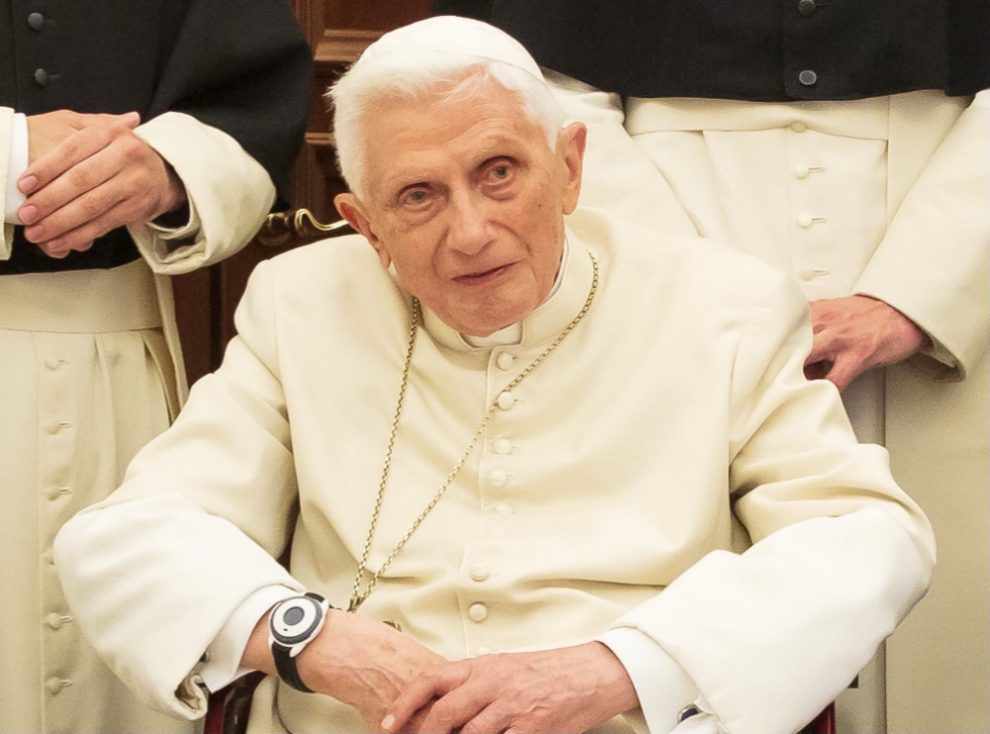On February 11, 2013, Pope Benedict XVI did something that had only happened four times in the previous 1,000 years of the papacy.
He resigned.
It was a stunning end not only to an eight-year reign, but also to an ecclesiastical career that had spanned six decades and—even prior to his election as pope in 2005—made him one of the most influential Catholic leaders of the 20th century.
The son of a rural policeman, Joseph Ratzinger was born in 1927. Like many Germans of his generation, his life was disrupted by the rise of Adolf Hilter and the coming of World War II. Ratzinger and his brother Georg had to abandon their seminary studies when they were drafted into military service. They were able to return after the war and were both ordained in 1951.
A rising star
Possessed of a keen intellect, Ratzinger was drawn to theological studies. In 1959, he accepted a teaching position in Bonn, where he became friends with Cardinal Joseph Frings, the Archbishop of Cologne. When the first session of the Second Vatican Council convened in 1962, Frings brought Ratzinger along as a peritus, or personal theologian.
Vatican II would transform Ratzinger into a major figure in Catholic theology. He played a key role in crafting several Council documents, particularly Dei Verbum (Dogmatic Constitution on Divine Revelation). Dei Verbum cautiously endorsed the growing Catholic openness to modern biblical scholarship.
In 1966, Ratzinger joined an all-star faculty of Catholic and Protestant scholars at the University of Tubingen. His teaching style attracted hundreds of students impressed by both his erudition and deeply personal faith. His lectures form the basis of his 1968 book An Introduction to Christianity, which has sold hundreds of thousands of copies and been translated into at least 19 languages.
Second thoughts
Even before the end of Vatican II, however, Ratzinger was growing estranged from some of his fellow theologians. He was among those who felt that the final document of Vatican II, Gaudium et Spes (The Pastoral Constitution on the Church in the Modern World), was too positive about modernity and gave insufficient weight to human sinfulness.
He was also disturbed by the rising militancy of his students. In 1968, Ratzinger became angry when a group of theology students put out a flier arguing that “the New Testament is a document of inhumanity, a large scale deception of the masses” and suggesting that the cross of Jesus Christ was “a sado-masochistic glorification of pain.”
That same year, 1968, Pope Paul VI issued his landmark encyclical Humanae Vitae (On the Regulation of Birth), which reaffirmed the church’s teaching against the use of artificial contraception. The encyclical created a rift between theologians and bishops, with the former increasingly willing to speak publicly about their disagreements with church teaching.
In 1976, Paul VI appointed Ratzinger Archbishop of Munich and Freising and made him a cardinal only a few weeks after his ordination. Two years later, Ratzinger and his fellow cardinals elected the Polish archbishop Karol Wojtyla to succeed Pope John Paul I, who had died only 33 days into his reign. Taking the name John Paul II, the new pope appointed Ratzinger to the position of Prefect of the Congregation for the Doctrine of the Faith (CDF) in 1981.
Defender of the faith
The CDF (renamed the Dicastery for the Doctrine of the Faith in 2022) is one of the oldest institutions of the Roman Curia, the administrative arm of the papacy. Originally founded as the Sacred Roman and Universal Inquisition in 1542, its historic role has been to police the boundaries of the Catholic faith.
The new prefect moved swiftly to employ the powers of his new office. In 1984, Ratzinger’s CDF issued a blistering critique of liberation theology that accused it of borrowing concepts from Marxism. While conceding that Christians should be involved “in the struggle for justice, peace, and human dignity,” the instruction cautioned against reducing the gospel to any form of social or political liberation.
Ratzinger also sought to limit the influence of other social movements that were making their presence felt within the church. In the early 1990s, the CDF’s repeated efforts to shape a planned U.S. bishops’ document on women in the church ultimately led the conference to abandon the project. The CDF also demanded that priests and religious involved in LGBTQ ministry publicly affirm church teaching on homosexuality.
By the end of the 1990s, Ratzinger’s focus had shifted to questions of ecumenical and interreligious dialogue. In 2000, the CDF issued the document Dominus Iesus (On The Unicity and Salvific Universality of Jesus Christ and the Church). Its aim was to stress the “salvific universality” of Jesus Christ and to rule out the belief that “one religion is as good as another.” The document extended this principle to other Christian churches, arguing that Protestant denominations were “not Churches in a proper sense.” While the document arguably did nothing more than restate the teaching of Vatican II, it made almost no reference to the considerable amount of ecumenical dialogue that had occurred on these questions since the Council.
“Do not do this to me.”
By the time St. Pope John Paul II died in 2005, Ratzinger was the most well-known Catholic cardinal in the world. Many observers believed that he was too polarizing a figure to be elected pope. In a homily delivered at the Mass held before the conclave, Ratzinger leaned into these perceptions, calling for the church to stand against a “dictatorship of relativism” that rejected the idea of universal truth.
The initial ballots, however, made clear that Ratzinger had the broadest base of support. He later recalled offering a silent prayer as he watched the tally next to his name grow. “Do not do this to me! You have younger and better people at your disposal.” On April 19, he received the necessary two-thirds majority and took the name Pope Benedict XVI.
Those who expected the new pope to be a dour disciplinarian were often pleasantly surprised at the positive tone of his public statements. His first encyclical, Deus Caritas Est (God is Love), argued that the history of God and humanity is not a contest of wills but a love story. Being a Christian “is not the result of an ethical choice or a lofty idea but the encounter with an event, a person, which gives life a new horizon and a decisive direction,” Benedict writes in the encylical. Benedict also found time to write a three-volume work on the life of Jesus of Nazareth that combined modern biblical scholarship with spiritual reflection.
Like all recent popes, Benedict had to address the increasingly global crisis of clerical sexual abuse. He became the first pope to meet with abuse survivors when he travelled to the United States in 2008. Benedict also removed Father Marcial Maciel as leader of the Legionaries of Christ after an investigation confirmed several allegations of sexual abuse.
As his pontificate wore on, Benedict’s concerns on the day of his election about his age and strength looked increasingly prescient. Immersed in his writings, the pope was perceived as detached from day-to-day administration. Beginning in 2012, a steady stream of documents—including the pope’s personal correspondence—were leaked to Italian journalists. They wrote stories depicting a Roman Curia consumed by bitter rivalries and corruption. When Benedict’s long-time biographer Peter Seeward visited him in late 2012, he found his friend “drained of energy” and “deeply disheartened.” Just a few months later, Benedict announced his resignation.
The two popes
If Benedict hoped to slip quietly into retirement, he was quickly disappointed. To some extent the problem was of his own making. Rather than return to Germany, he remained in Rome, continued to wear white vestments, and took the title “Pope Emeritus.” In that role, he quickly became a symbolic figure for those opposed to the direction of Pope Francis’ papacy. Benedict’s few public statements were exhaustively analyzed for hints of his views about his successor. Some in the more fevered corners of the church argued that Benedict’s resignation was invalid and that he was still pope.
The palace intrigue began to fade a bit as Benedict entered his ninth decade and became increasingly frail. In June 2020, at the age of 93, he travelled to Germany to be by the bedside of his ailing brother Georg. It was his first trip outside of Italy since resigning the papacy. Georg died shortly after Benedict returned to Rome.
It is perhaps fitting that Benedict’s final papal encyclical was called Caritas in Veritate (Charity in Truth), for these were two constant themes in his work. Benedict never wavered in his defense of truth as he understood it, even if it meant estrangement from those he had once called friends and colleagues. For Benedict, however, truth was not an abstraction but the truth about a personal God who is caritas, love. As he says in the close of his book Last Testament, “God is not a ruling power, a distant force; rather he is love and he loves me—and as such, life should be guided by him, by this power called love.”
Image: via Wikimedia Commons












Add comment